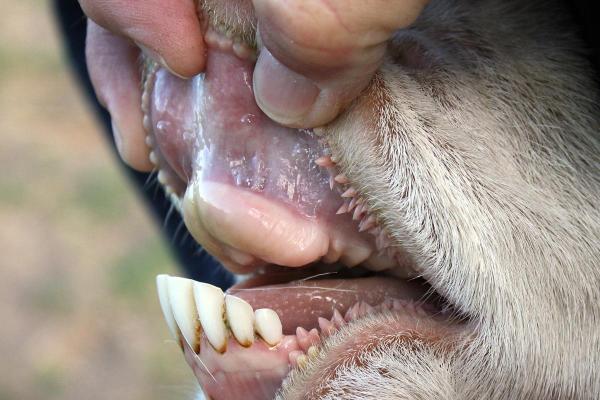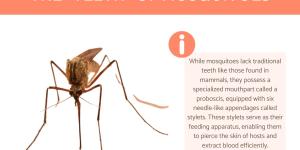Do Cows Have Teeth on Top? -


You may be familiar with cows as herbivores, often spotted peacefully grazing in fields during family trips from your childhood. However, when it comes to the intricate details of cow's teeth, how much do you really know? These fascinating creatures have a unique dental structure that plays a vital role in their ability to consume and digest their plant-based diet.
The following AnimalWised article addresses common questions such as whether cows have teeth, if they have teeth on top, among others.
Do cows have teeth?
Cows possess a unique dental structure that distinguishes them from many other animals.
While they do have teeth, they lack upper front teeth, instead featuring a remarkable adaptation known as the dental pad. This fleshy and resilient pad serves a crucial purpose in their feeding process, particularly when consuming tough and fibrous vegetation.
To understand the dental composition of cows, it is essential to recognize the three types of teeth they possess. Firstly, they have incisor teeth located in their lower jaw, which play a vital role in carrying food into their mouths. These lower incisors help facilitate the initial stages of the feeding process.
When it comes to grinding food into a more digestible form, cows rely on their premolars and molars. These teeth can be found in both the upper and lower jaws and work together to grind food into a fine paste, aiding in digestion.
One intriguing aspect of cow dentition is the fact that their teeth are constantly growing. This continuous growth serves as an adaptation to counteract the wear and tear caused by chewing tough vegetation. However, as cows age, their teeth naturally begin to wear down and may require extraction to maintain optimal dental health.
Beyond their teeth, cows possess a unique digestive system as ruminant animals. This means they possess a specialized process called rumination, where food is regurgitated from the stomach back to the mouth for further chewing. Utilizing their tongue and lips, cows grasp grass or forage and introduce it into their mouths to initiate the rumination process.
During rumination, cows meticulously chew their food for approximately 50 to 60 seconds before swallowing it once again. This practice is vital for effective digestion, as it serves multiple purposes. Firstly, it aids in the production of saliva, which contains enzymes that aid in the breakdown of food. Secondly, it reduces the size of the food particles, increasing their density and facilitating further digestion. Additionally, rumination allows for the separation of particles that require additional fermentation time and enhances the overall digestion of fibrous materials.
You might be interested in this other article, where we discuss what cows and bulls eat besides grass.
How many teeth do cows have?
The dental composition of adult cows comprises a total of 32 teeth in their permanent dentition. These teeth play a crucial role in the cow's eating and digestion process, enabling efficient consumption and breakdown of their herbivorous diet.
Starting with the lower jaw, cows possess 8 incisors. These incisors serve as the front teeth responsible for grasping and tearing food, such as grass and forage. With their strong and sharp structure, these incisors allow cows to cut through their food efficiently, preparing it for further processing.
Alongside the incisors, cows have 6 premolars in their lower jaw. These premolars feature flat and rough surfaces that aid in the crushing and grinding of food. Functioning as bicuspids, they work to break down grass and forage into smaller, more manageable pieces, facilitating the subsequent stages of digestion.
Within the lower jaw, cows also possess 6 molars. The molars are the largest and strongest teeth found in the cow's mouth. Their rough and serrated surface allows them to effectively grind and crush food. Working in conjunction with the premolars, the molars play a vital role in breaking down food into smaller particles, optimizing its digestibility.
It is worth noting that in the upper jaw, cows have a unique anatomical feature known as the "dental pad." This pad is a thick, horny layer that replaces the presence of upper incisor teeth. Functioning as a supporting surface, the dental pad aids in the biting and cutting of food. While lacking actual teeth, the dental pad provides stability and support for the lower incisors during the feeding process.
You might be interested in this other article, as it delves into the fascinating topic of how many stomachs cows have.

Dental anatomy of cows
The teeth of cows, like those of other mammals, possess a robust structure that consists of different layers. These layers work together to support the cow's dental function and ensure effective feeding and digestion. Let's explore the components of a cow's teeth:
- Dental enamel: the outermost and hardest layer of the teeth is the dental enamel. It provides protection against the abrasion and corrosive effects of food. Dental enamel is highly resistant and helps maintain the integrity of the teeth, preserving their functionality.
- Dentin: situated beneath the dental enamel, dentin is a relatively softer layer that constitutes the bulk of the tooth structure. It provides support and strength to the teeth. While dentin is less hard than enamel, it still possesses considerable strength.
- Dental pulp: the innermost part of the tooth is known as the dental pulp. It comprises connective tissue, blood vessels, and nerves. The dental pulp plays a crucial role in nourishing the teeth and supplying sensitivity. It ensures the vitality and health of the tooth by providing necessary nutrients and maintaining the tooth's sensory functions.
Cows' teeth exhibit continuous growth throughout their lives due to the abrasion caused by feeding on grass and fibrous forage. This natural wear ensures that the teeth remain in proper condition for efficient chewing and grinding of food. As cows feed on grass and fibrous forage, their teeth experience wear from abrasion. To compensate for this wear and maintain a functional dentition, constant growth of the teeth occurs throughout the cow's life.
You might also be interested in this other article, as it delves into a list of animal species boasting the highest number of teeth in the animal kingdom.
If you want to read similar articles to Do Cows Have Teeth on Top? -, we recommend you visit our Facts about the animal kingdom category.
- Argentine, ACH (2012). Bovine teeth; Dental chronometry referred to the Holando Argentino breed . Our Holland. 12pp. Available at: ruminantes.com/como-es-la-dentadura-del-ganado-bovino/
- Ierace, AJM (2015). Bovine Dental Prosthesis: A tool to avoid the early discarding of the breeding cow .






